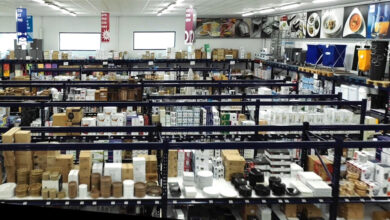
From the irruption of payment for use, both in services and hardware, it has provided an endless number of terms and modalities, which must be explained in detail in order to fully understand all the options it offers and to fully exploit its functionalities.
In fact, IT services can be broken down into layers, of which the infrastructure is the lowest level, followed by the platform, and at the top would be the software or applications used by end users. Next, we will review some of the main as-a-service modalities.
Software as a Service
are all those cloud services in which the user or the company directly accesses the business program or application, without control or knowledge of the underlying infrastructure. All the technical part is, therefore, in the hands of the partner or service provider that has deployed it, assuming all the complexity of its installation, maintenance and security. This is the case of Gmail, Dropbox or Google Docs.
This type of service is the easiest option to contract, since it does not require technical knowledge. On the other hand, the loss of control of the entire information or data life cycle chain, with which the security and privacy requirements and protocols of software as a service may not be adjusted to certain data that is especially sensitive for companies, as explained by Data Protection.
Hardware as a Service
Hardware as a Service (HaaS), while very similar to leasing, comes with a few additional benefits. An IT department’s hardware as a service would typically be part of a fully managed support contract. This means that the solution can be fully installed by the engineers of the contracted company and any installation cost can be included in the monthly cost. The hardware is also fully compatible with the TI. Under a lease, you may be covered by a warranty. However, any problem involves sending a unit back to the manufacturer. This is inconvenient, for example, in the case of a desktop PC.
To put it another way, during a traditional hardware lease, maintenance is either the user’s responsibility or the contractor’s on-site maintenance; In the case of hardware as a service, this type of eventuality is assumed by the company that provides the service and has personnel on site to carry it out, as pointed out by Hostdime.
At the end of a standard lease, the user will be faced with several options, including keeping the equipment for a final payment, continuing to lease the equipment, or sending it back to the leasing company. With the hardware-as-a-service solution, while this is all up to the company, equipment is usually upgraded and upgraded at the same rate.
Platform as a Service
This model is defined as an intermediate stage in which the company’s technical team can deploy their applications or developments without having to worry about the resources they require, since these are the responsibility of the service provider they have hired. In this way, developers can build their applications to their liking, with their specific performance and security requirements, but completely disassociating themselves from the installation and configuration of everything that has to do with the hardware that supports them.
This is a model that greatly reduces the complexity when deploying and maintaining applications, as these solutions automatically manage scalability at the hardware level, using more resources if necessary. An example of this would be Google Cloud.
Infrastructure as a Service
In this case, the company’s technical team has absolute controlnot only on the applications that it builds in the cloud, but also on the infrastructure that it has contracted, virtually.
Thus, the client company is responsible for configuring the virtual machines that support their developments, and even choosing the memory or processor capacity that each of them will need. In this way, the greatest customization and adaptation to what the company needs is achieved, even in critical environments, but in return, the complexity and the work that the technicians themselves must perform are notably increased. OVH or Microsoft Azure are some examples of this.



